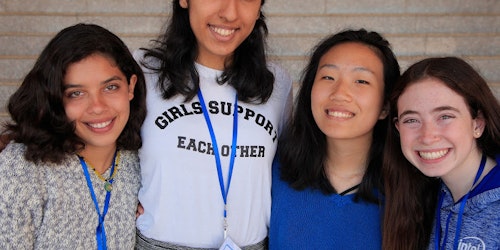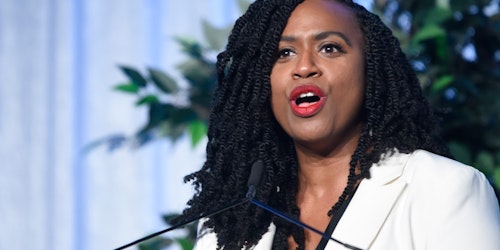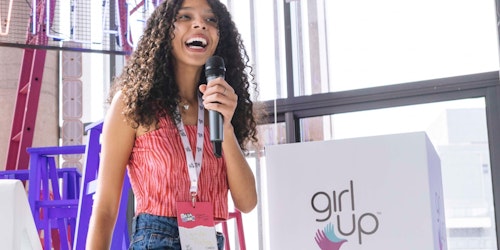What? Didn’t you hear the explosion?
She was the first Brazilian person on Spotify’s 50 most-heard artists. She’s on Billboard’s list of the world’s 50 most influential social media artists. In 2014, she was the youngest artist in history to perform at a Latin Grammy. And now she’s about to conquer the Mexican hearts as a coach in the local The Voice.

A sturdy and long-lasting appearance in another country: that was just what was missing to put an end to the shadow of doubt about the super career of the hurricane named Anitta. Do we have an upcoming Shakira?
She started singing at age 8 in the church choir. Since that time, she wanted to be an artist, rich and famous. Anitta’s mother says she was a great student, always wanting to be the number one. She had a comfortable childhood in an outskirts of Rio away from the favelas. But at 11, she saw her father go bankrupt – and she had to go to a public school. By that time, Anitta decided to learn English. Today, besides Portuguese and English, she is also fluent in Spanish and Italian.

With the musical project Checkmate, Anitta began to make clear her intentions to become a global star. In the first of four clips, Will I See You, she put an end to any doubts about her vocal talent. In Is That For Me, the star shows a previously unknown pop side. The third release of the project is the hit Downtown, a super sexy duet with J. Balvin that took Anitta to 39th place on Spotify. After bringing the eyes of the world to herself, the signature: Vai Malandra, sung in Portuguese and filmed in a Rio de Janeiro favela. It’s as if she was saying: “nice to meet you, world, this is me.” The ambition and the precise aim in the management of her career impress, but a dose of controversy could not be missing.
Is her sexy dancing a sign of female empowerment or is it objectifying? Is the way she shows the favelas pride or utilitarianism? Is she white or black? Strongest voice of the carioca funk, a rhythm born in the favelas of Rio, Anitta is both accused of cultural appropriation and applauded by proudly taking the carioca funk to the world. In the context of feminism, many people see her sensual dancing – and, boy, she can dance! – as a contribution to rape culture of rape and the objectification of the female body. Others claim her to be a genius capable of using prevailing logic to her advantage, resulting in a meteoric career of which she is the chief manager.
Debates over this brilliant 25-year-old businesswoman just started; but if Checkmate showed her multiplicity and his vocal talent, the Mexican explosion is the proof that these questions came to stay.
O quê? Você não ouviu a explosão?
Ela foi a primeira pessoa brasileira entre os 50 artistas mais ouvidos do Spotify. Figura na lista da Billboard dos 50 artistas mais influentes do mundo nas redes sociais. Em 2014, ela foi a artista mais jovem da história a performar em um Grammy Latino. E agora vai conquistar os corações mexicanos como técnica no The Voice local.
Uma aparição robusta e duradoura em outro país: era o que faltava pra acabar com o fiapo de dúvida sobre a super carreira desse furacão chamado Anitta. Será que temos uma próxima Shakira?
Ela começou aos 8 anos no coral da igreja. Desde essa época, já queria ser artista, rica e famosa. A mãe diz que ela era estudiosa, sempre queria ser a melhor da turma. Ela teve uma infância confortável, em uma periferia carioca longe das favelas. Mas aos 11 anos de idade, viu o pai ir à falência e teve que estudar em escola pública. Com a mesada, Anitta resolveu estudar inglês. Hoje, além do português e do inglês, ela também domina o espanhol e o italiano.
Com o projeto musical Checkmate, Anitta começou a deixar claras suas intenções de ir além do funk carioca e se tornar uma estrela global. No clipe de estreia, Will I See You, ela acabou com qualquer dúvida sobre seu talento vocal. Em Is That For Me, a estrela mostra um lado pop até então desconhecido. O terceiro lançamento do projeto é o hit Downtown, parceria sensualíssima com J. Balvin que levou Anitta ao 39 lugar no Spotify. Depois de trazer os olhos do mundo para si, a assinatura: Vai Malandra, cantada em português e filmada em uma favela carioca. É como se ela dissesse: “muito prazer, mundo, essa sou eu”.
A ambição e a mira certeira na gestão de sua carreira impressionam, mas uma dose de polêmica não poderia faltar.
Sua bunda é empoderamento ou objetificação? A forma como expõe a quebrada é orgulho ou utilitarismo? Ela é branca ou negra? Porta voz de um ritmo que nasceu nas favelas cariocas, Anitta hora é acusada de apropriação cultural, hora recebe aplausos por orgulhosamente levar o funk carioca para o mundo. No contexto do feminismo, muita gente avalia que a forma sensual como dança – e como dança! – contribui para a cultura do estupro e para a objetificação do corpo feminino. Para outros, ela é um gênio capaz de usar a lógica vigente a seu próprio favor, resultando em uma carreira meteórica da qual ela é a principal gestora.
Os debates sobre essa brilhante empresária de 25 anos começaram há pouco. Mas, se Checkmate mostrou sua multiplicidade e seu talento vocal, a explosão mexicana é a prova cabal de que essas perguntas vieram pra ficar.
(Photo credits to unicoznews and Anitta via Instagram)








